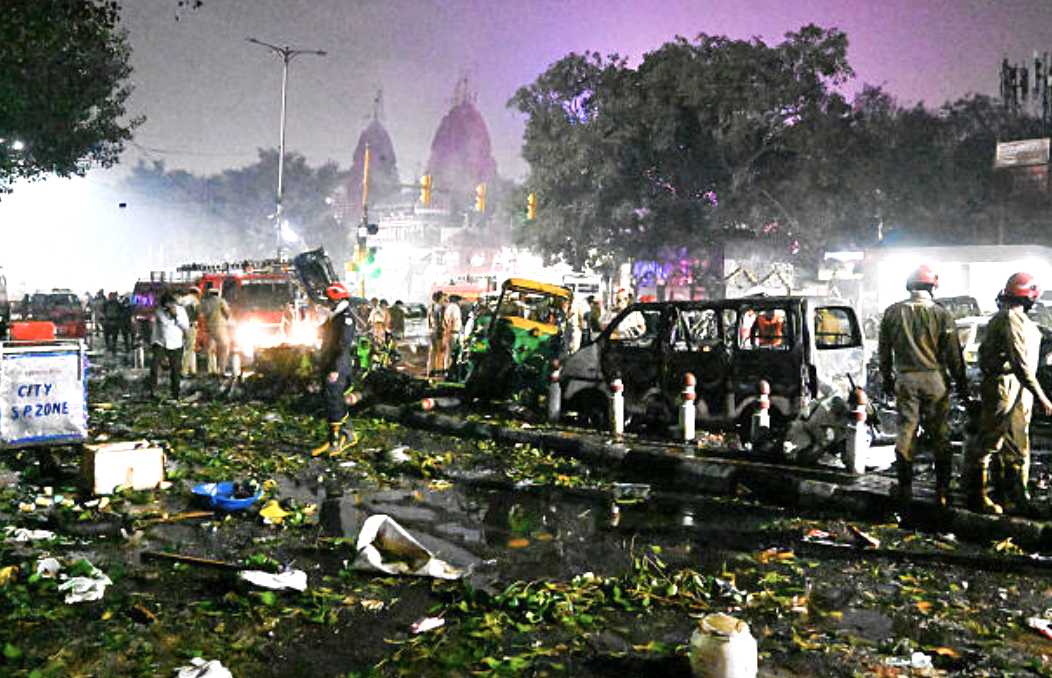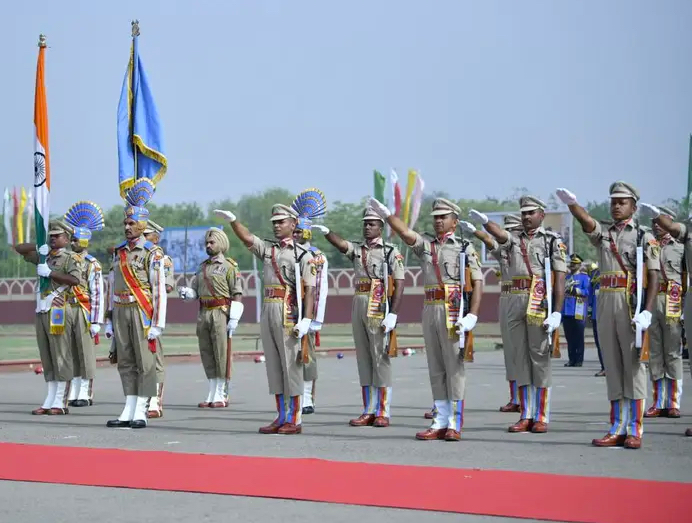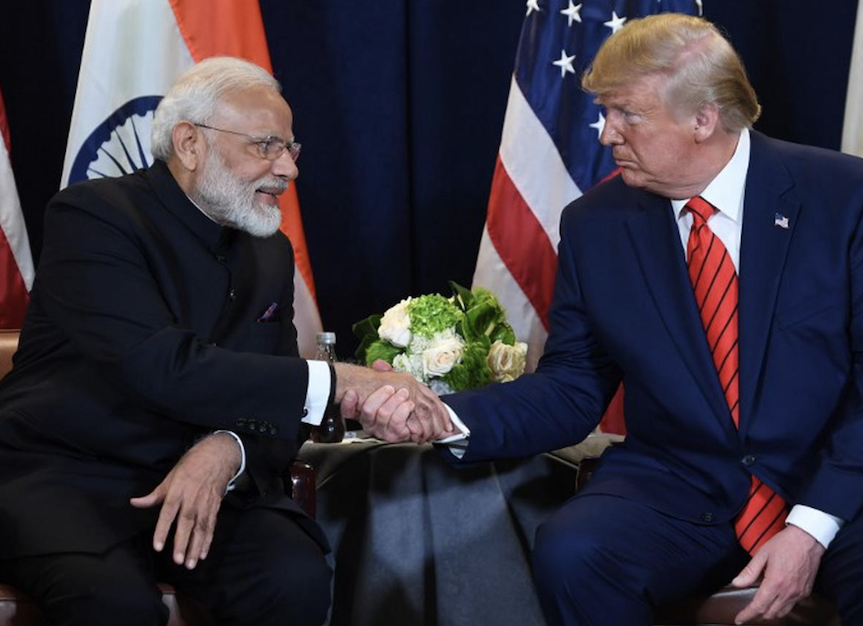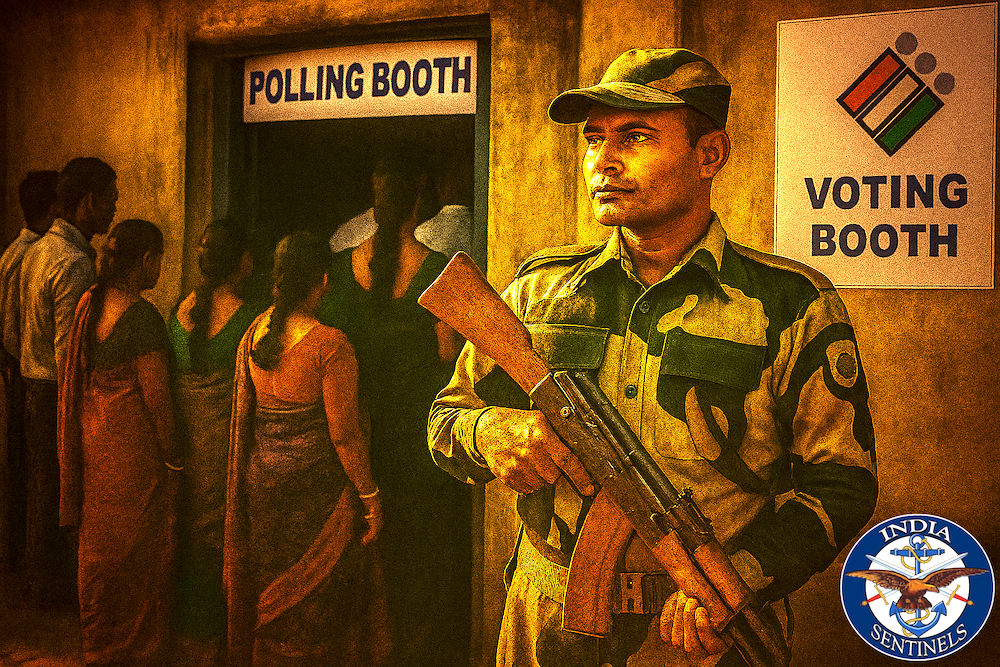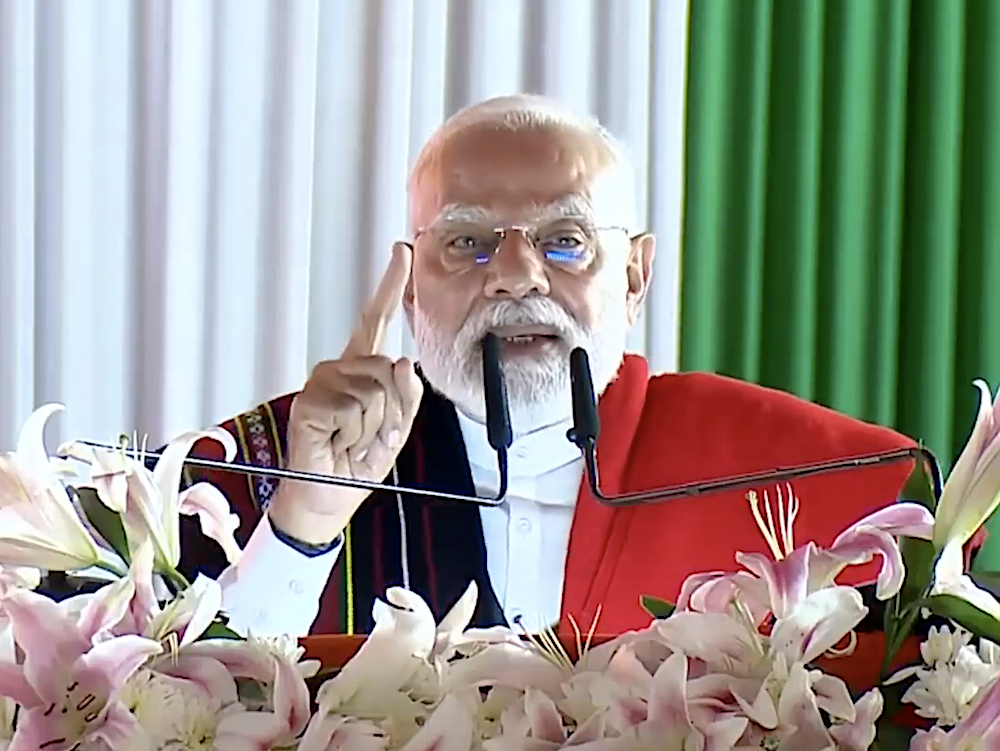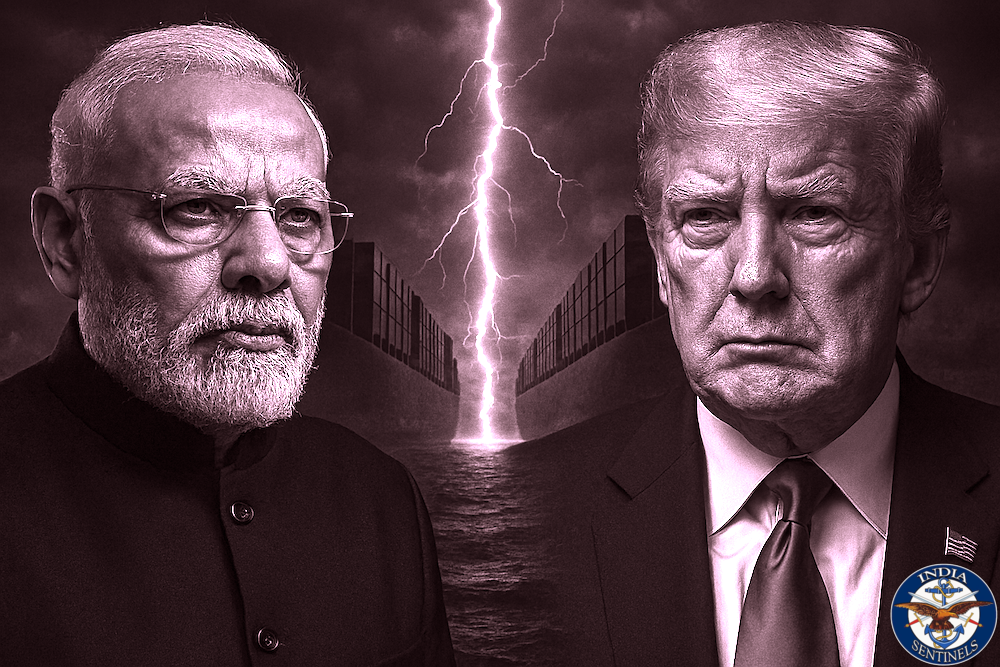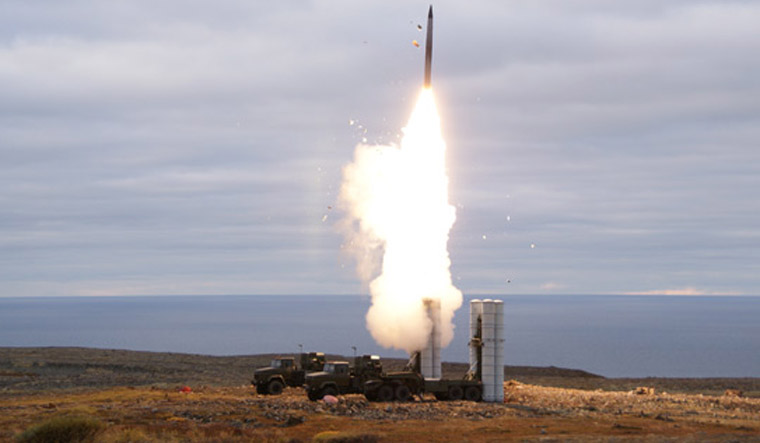 S-400 representative photo. (India Sentinels)
S-400 representative photo. (India Sentinels)
The thunderous applause that greeted Prime Minister Narendra Modi’s Independence Day announcement still echoes across the ramparts of the Red Fort, but the reverberations of his words – “Mission Sudarshan Chakra” – threaten to unleash tremors that could tear apart the delicate fabric of South Asian peace.
What masquerades as India’s technological triumph, this ambitious dream of an indigenous air-defence shield, conceals within its gleaming promise the seeds of catastrophe. It is not merely another grand venture in India’s march towards self-reliance – it is a fundamental misreading of the brutal calculus of modern warfare, a strategic miscalculation so profound it could ignite the very fires it seeks to extinguish.
The ghosts of February 2019 haunt this decision. The surgical strikes at Balakot, the swift and decisive Pakistani retaliation – these memories burn fresh in the corridors of power in New Delhi. They whisper seductively of vulnerability, of the need for an impenetrable dome of protection. But what they truly reveal is a dangerous illusion: that safety can be purchased with technology, that the ancient mythical weapon of Lord Vishnu can be recreated in steel and circuitry to shield a billion souls.
This is the great deception of our age. For in pursuing this chimera of absolute defence, India stands poised not to secure its future, but to mortgage it. The very shield meant to protect could become the sword that severs the threads holding South Asia back from the abyss of perpetual conflict.
Let me put forward my reading of this version of fantastic yet dangerous ambition now.
The Maths of Impossibility
India’s pursuit of a nationwide air-defence shield confronts insurmountable technical and economic realities that render the mission fundamentally unachievable. Even the United States, after investing over $200 billion in missile defence since the 1980s, maintains only limited coverage against North Korean threats and almost no coverage against Russian or Chinese threats. No nation has achieved reliable nationwide missile-defence coverage despite decades of development.
The mathematical challenges are stark and unforgiving. India’s indigenous Advanced Air Defence (AAD) and Prithvi Defence Vehicle (PDV) interceptor missiles provide coverage radii of merely 150–300 kilometres against medium-range ballistic missiles. Scaling this to protect India’s 1.4 billion citizens across 3.3 million square kilometres would require hundreds of interceptor batteries – a logistical nightmare.
For comprehensive coverage, India would need to integrate imported systems like the S-400 Triumf with indigenous Akash and Israeli-origin systems. However, since India operates indigenous systems alongside imports from Russia, Israel, and potentially western nations, seamless integration becomes technically impossible as they won’t let us tinker with their source codes. Apart from this, each system operates on different radar frequencies, command protocols, and engagement envelopes.
The technical complexity of integrating specialized technologies – interceptor missiles, tracking radars, fire-control systems, and command centres – has proven overwhelming even for technologically advanced nations. The American Aegis Ballistic Missile Defence System, despite decades of refinement, maintains an intercept success rate of approximately 80% under controlled conditions. In combat scenarios with electronic warfare and multiple simultaneous targets, success rates plummet dramatically.
The Hypersonic Challenge
More critically, India faces the reality of hypersonic weapons that render traditional missile defence obsolete. China’s DF-ZF hypersonic glide vehicle travels at speeds exceeding Mach 5 with unpredictable flight trajectories that can change direction mid-flight. These weapons approach targets at such low altitudes and high speeds that current radar systems provide mere seconds of warning.
Pakistan, meanwhile, is reportedly developing its own hypersonic capabilities with Chinese assistance. The Ababeel medium-range ballistic missile already incorporates multiple independently targetable re-entry vehicle (MIRV) technology specifically designed to overwhelm missile-defence systems through sheer numbers.
India has not successfully conducted any hypersonic vehicle-interception exercise, leaving the nation fundamentally vulnerable to the most advanced emerging threats. The Defence Research and Development Organisation’s (DRDO) claims about developing hypersonic interceptors remain largely theoretical, with no demonstrated capability against real-world targets.
Economic Burden
The financial implications alone render Mission Sudarshan Chakra economically ruinous. Conservative estimates suggest full deployment across India’s major population centres would require $15–20 billion in initial investment, with annual operating costs exceeding $3 billion.
Each interception carries prohibitive costs: indigenous Akash missiles cost approximately $500,000 per shot, while advanced interceptors, like those used in Israel’s Iron Dome system, cost $50,000–$100,000 per interception. This creates a devastating cost asymmetry where adversaries can force India into economic attrition through relatively cheap offensive missiles.
For perspective, Iran’s Qassam rockets cost as little as $5,000 each, while Hamas’s more sophisticated rockets cost $15,000–$30,000. This 10-to-20-fold cost disadvantage means Pakistan and China could bankrupt India’s defence budget through sustained missile attacks, regardless of interception success rates.
The ongoing conflict in Ukraine starkly illustrates this vulnerability. Russian forces have systematically degraded Ukrainian Patriot systems through sustained attacks using relatively inexpensive drones and cruise missiles. Ukraine’s Patriot missile stocks have been rapidly depleted, with each interceptor costing upwards of $3 million while facing Russian Shahed drones that cost merely $20,000 each. The production and replenishment of interceptor stocks to match expenditure rates during active conflict has proven virtually impossible, forcing Ukraine to ration its defensive fire even against high-value targets.
This asymmetric attrition warfare demonstrates how even advanced western air-defence systems become economically unsustainable under sustained attack – a lesson India ignores at its peril.
India’s defence spending currently stands at 2.4% of GDP, already trailing China’s expanding military budget of approximately 1.7% of a much larger economy. Mission Sudarshan Chakra would compete directly with critical modernization needs including cyberwarfare capabilities, naval expansion, and conventional force upgrades desperately needed for multi-front contingencies.
Stability-Instability Paradox
Mission Sudarshan Chakra would fundamentally destabilize regional nuclear equilibrium by triggering the classic stability-instability paradox that governs nuclear relationships. Missile-defence systems paradoxically increase conflict probability by creating false confidence while simultaneously encouraging adversaries to develop countermeasures that lower nuclear thresholds.
Pakistan’s response would prove particularly dangerous and unpredictable. Faced with Indian air-defence systems that potentially negate Pakistan’s nuclear deterrent, Islamabad would likely accelerate its tactical nuclear weapons programme. Pakistan’s Nasr (Hatf IX) short-range ballistic missile system represents a deliberate lowering of the nuclear threshold, designed specifically to counter India’s conventional military advantages through early nuclear escalation.
Pakistan’s nuclear doctrine explicitly reserves the right to first use when facing existential threats to territorial integrity. An effective Indian missile-defence shield would create precisely such perceived existential threats, pushing Pakistani decision-makers towards a dangerous “use it or lose it” mentality during crisis situations.
The introduction of more tactical nuclear weapons fundamentally alters strategic calculations in South Asia. Unlike strategic nuclear weapons designed for deterrence, tactical nuclear weapons are meant for battlefield use, dramatically increasing the probability of nuclear employment during conventional conflicts.
China’s Countermeasures
Beijing’s response would prove equally destabilizing but more technologically sophisticated. Chinese strategic planners view missile defence as fundamentally threatening to nuclear deterrent credibility. Hence China’s formidable rocket force. The PLA-RF is the only force on the planet that can fire a 1,000 tactical short- to medium-range ballistic missiles an hour on a sustained level.
Besides, let’s not forget that China’s development of MIRV-equipped intercontinental ballistic missiles, hypersonic glide vehicles, and sophisticated decoy systems represents a direct response to global missile-defence proliferation.
China would likely expand deployment of the DF-41 ICBM, capable of carrying 10 independently targetable warheads specifically designed to overwhelm missile-defence systems. The DF-ZF hypersonic glide vehicle programme would receive accelerated funding and deployment specifically to counter Indian defensive capabilities.
Perhaps more concerning, China might provide Pakistan with advanced countermeasure technologies including MIRV systems and hypersonic capabilities. The China-Pakistan Economic Corridor already facilitates extensive military technology transfers; Mission Sudarshan Chakra would incentivize Beijing to share its most advanced offensive systems with Islamabad.
The Pre-emption Trap
Mission Sudarshan Chakra creates dangerous incentives for pre-emptive action by both Pakistan and China. Missile-defence systems are most vulnerable during construction and initial deployment phases, when coverage remains incomplete and systems untested under combat conditions.
Both Pakistan and China might calculate that strikes against Indian missile-defence installations during construction represent rational strategic choices. Pakistan’s demonstrated willingness to conduct surgical strikes – as evidenced by the February 27, 2019, response to Balakot – suggests Islamabad would not hesitate to target critical defensive infrastructure.
The combination of MIRV technology and ballistic missile defence creates particularly strong incentives for first strikes. Multiple warhead systems become exponentially more effective when deployed in overwhelming numbers before defensive systems reach full operational capability.
Perhaps most dangerously, Mission Sudarshan Chakra would encourage conventional conflicts below the nuclear threshold. Both Pakistan and China might calculate that limited conventional attacks remain feasible despite Indian air defences, encouraging more frequent border skirmishes and proxy conflicts.
False Confidence
The psychological impact of defensive systems often proves more dangerous than their technical limitations. Israeli experience with Iron Dome demonstrates how defensive systems create false confidence among political leadership, encouraging more aggressive policies based on perceived invulnerability.
Indian decision-makers might pursue more aggressive conventional strategies against Pakistan, mistakenly believing defensive systems provide adequate protection against nuclear escalation. This could manifest in larger-scale cross-border operations or more frequent surgical strikes that Pakistan perceives as existential threats.
The 1999 Kargil conflict demonstrated how limited conflicts can rapidly escalate towards nuclear thresholds. Mission Sudarshan Chakra would lower inhibitions against initiating conflicts while simultaneously encouraging Pakistani tactical nuclear responses.
Arms Race Dynamics
The financial dynamics triggered by Mission Sudarshan Chakra would prove economically catastrophic for all South Asian nations. Historical analysis demonstrates that military buildups between India and Pakistan consistently divert resources from crucial social development programmes.
During the 1980s and 1990s, Pakistan allocated nearly three times more resources to defence than social sectors during peak competition periods with India. Mission Sudarshan Chakra would recreate these damaging dynamics on a much larger scale, forcing all regional powers into economically destructive spending competitions.
India’s broader economic development would suffer devastating consequences. Current defence spending already absorbs resources desperately needed for healthcare, education, and infrastructure development. The substantial costs associated with nuclear and missile programmes pose significant opportunity costs for economic growth that Mission Sudarshan Chakra would dramatically exacerbate.
Alternative Approaches
India’s genuine security needs would achieve better outcomes through strategic restraint and targeted conventional force improvements. Resources allocated to Mission Sudarshan Chakra could modernize India’s conventional forces, enhance intelligence capabilities, and improve border infrastructure with far greater security returns.
Cyberwarfare capabilities represent a more cost-effective security investment than missile-defence systems. China’s growing cyberwarfare capabilities pose threats that missile defence cannot address, while cyberdefences offer protection against both state and non-state actors at fraction of the cost.
The expansion of the Indian Navy remains our most pressing strategic requirement. China’s growing presence in the Indian Ocean requires sustained Indian naval modernization that Mission Sudarshan Chakra would financially preclude. A robust naval deterrent provides more comprehensive security than land-based missile-defence systems.
Rather than destabilizing regional equilibrium through missile-defence proliferation, India should pursue confidence-building measures and arms-control initiatives with both Pakistan and China. The Lahore Declaration of 1999 with Pakistan and various confidence-building measures along the line of actual control (LAC) with China demonstrate that diplomatic approaches can achieve meaningful security improvements.
The Path of Restraint
Mission Sudarshan Chakra represents a dangerous convergence of technological optimism and strategic miscalculation that would neither enhance Indian security nor serve regional stability. Its pursuit would trigger destabilizing arms races while draining resources from genuine development priorities that strengthen India’s long-term strategic position.
The very nomenclature betrays the fundamental conceptual fallacy underlying this mission. The ancient Sudarshan Chakra, according to Hindu mythology, was not merely a defensive shield but the ultimate weapon of mass destruction – capable of annihilating entire armies and reshaping the cosmos itself. To name a basic defence system after an instrument of absolute and final devastation reveals a profound misunderstanding of both strategic reality and mythological symbolism. A defensive system that aspires to the power of universal destruction is destined to become the very catalyst of the chaos it seeks to prevent.
True security lies not in the illusion of technological shields but in the patient, unglamorous work of diplomacy, strategic restraint, and addressing the root causes of regional tensions. India’s rise as a global power depends more on economic development and technological innovation than on expensive defensive systems of questionable effectiveness.
The choice facing India is clear: pursue the chimera of absolute security through Mission Sudarshan Chakra and risk regional destabilization or demonstrate strategic maturity through restraint and diplomacy. History suggests that nations pursuing absolute security often achieve the opposite – and South Asia cannot afford such miscalculations. The wheel of destruction, once set in motion, recognizes no master and spares no nation.
Disclaimer: The views expressed in the article are the author’s own and don’t necessarily reflect the views of India Sentinels.
Follow us on social media for quick updates, new photos, videos, and more.
X: https://twitter.com/indiasentinels
Facebook: https://facebook.com/indiasentinels
Instagram: https://instagram.com/indiasentinels
YouTube: https://youtube.com/indiasentinels
© India Sentinels 2025-26

